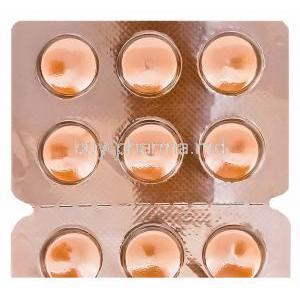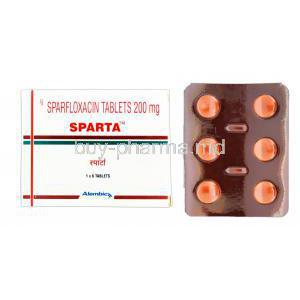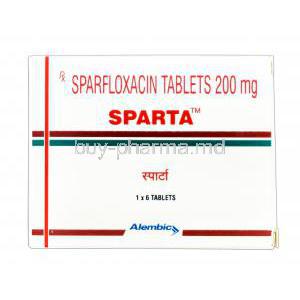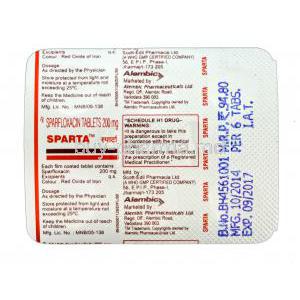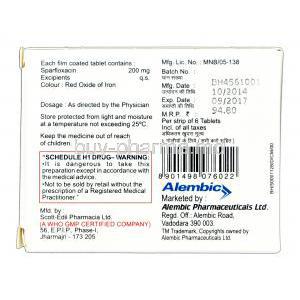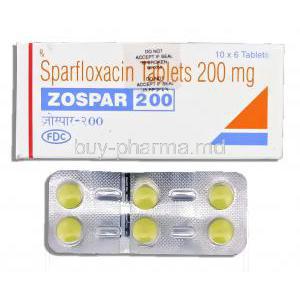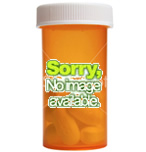Introduction to Sparta (Sparfloxacin)
Overview of Sparta as an antibiotic medication
Sparta, containing the active substance sparfloxacin, is a broad-spectrum antibiotic formulated to combat bacterial infections. It belongs to the fluoroquinolone family, recognized for their ability to penetrate deep into tissues and eradicate pathogens effectively. Its clinical relevance extends across respiratory, urinary, and dermatological infections, making it a versatile therapeutic option.
Historical background and development of sparfloxacin
Sparfloxacin was developed during the late twentieth century as part of an initiative to enhance the pharmacological potency of quinolone derivatives. It was designed to address bacterial resistance observed with earlier compounds, offering an extended half-life and improved activity against respiratory pathogens. Over time, its use became well-established in clinical practice, particularly for hard-to-treat infections.
Therapeutic class: Fluoroquinolone antibiotic
As a fluoroquinolone antibiotic, sparfloxacin exerts bactericidal activity through interference with bacterial DNA. This class of antibiotics is known for its wide therapeutic coverage, rapid action, and oral bioavailability, providing a convenient treatment modality for patients requiring outpatient therapy.
General role in bacterial infection management
Sparfloxacin plays a significant role in the treatment of infections where first-line agents may fail or be contraindicated. Its clinical scope includes both acute and chronic bacterial conditions, particularly those affecting the respiratory tract. By offering broad efficacy and systemic distribution, it continues to serve as an important option for clinicians managing resistant bacterial infections.
Composition and Formulations
Active ingredient: Sparfloxacin
The pharmacologically active component of Sparta is sparfloxacin, a synthetic antimicrobial compound belonging to the fluoroquinolone family. It is structurally designed to inhibit bacterial enzymes crucial for genetic replication.
Available dosage forms (tablets, oral formulations)
Sparfloxacin is primarily available as oral tablets. This ensures ease of administration, compliance, and systemic absorption suitable for both outpatient and hospital-based treatments.
Strengths and excipients included in preparations
Commercial formulations generally include sparfloxacin in standardized strengths. In addition to the active drug, tablets contain excipients such as stabilizers, fillers, and binding agents, which ensure drug stability, accurate dosing, and patient tolerability.
Mechanism of Action: How Sparfloxacin Works
Inhibition of bacterial DNA gyrase and topoisomerase IV
Sparfloxacin targets and inhibits two critical bacterial enzymes: DNA gyrase and topoisomerase IV. These enzymes are responsible for supercoiling and separation of bacterial DNA strands during replication.
Effects on bacterial DNA replication, repair, and transcription
By obstructing these enzymes, sparfloxacin disrupts essential DNA processes such as replication, repair, and transcription. This blockade prevents bacterial cell division and survival, leading to effective elimination of the pathogen.
Bactericidal properties and spectrum of activity
Sparfloxacin demonstrates bactericidal rather than bacteriostatic effects. It is particularly effective against Gram-positive organisms, atypical respiratory pathogens, and certain Gram-negative bacteria.
Differences from other fluoroquinolones
Compared to earlier fluoroquinolones, sparfloxacin exhibits enhanced activity against Streptococcus pneumoniae and other respiratory pathogens. Its longer half-life permits once-daily dosing, improving compliance in chronic treatment regimens.
Approved Medical Uses of Sparta (Sparfloxacin)
- Treatment of community-acquired pneumonia: Effective against both typical and atypical bacterial agents.
- Chronic bronchitis exacerbations: Reduces bacterial load in patients with long-standing respiratory conditions.
- Urinary tract infections (UTIs): Provides relief from recurrent or resistant infections.
- Sinusitis and respiratory tract infections: Addresses acute bacterial sinusitis and chronic respiratory disorders.
- Skin and soft tissue infections: Beneficial in cellulitis, wound infections, and abscesses.
Off-Label Uses of Sparfloxacin
- Tuberculosis adjunct therapy: Occasionally considered in resistant forms of the disease.
- Multidrug-resistant bacterial infections: Applied where other antibiotics demonstrate limited efficacy.
- Typhoid fever management: Alternative treatment in endemic regions.
- Dermatological infections: Investigated in acne and other persistent skin disorders.
- Other investigational uses: Under study for infections outside standard indications.
Dosage and Administration Guidelines
Standard adult dosing schedules
Sparta is typically administered once or twice daily, depending on the severity and type of infection. Standard regimens begin with a loading dose, followed by maintenance doses tailored to the individual.
Loading and maintenance doses for respiratory infections
In community-acquired pneumonia and chronic bronchitis exacerbations, treatment often begins with a higher initial dose to establish rapid therapeutic concentrations, followed by reduced maintenance dosing.
Dosage adjustments in renal or hepatic impairment
Patients with renal insufficiency require dosage modification due to altered drug clearance. Those with hepatic impairment may also require monitoring to prevent drug accumulation.
Frequency and duration of treatment
Treatment usually spans 7–14 days depending on infection severity. Shorter courses may be sufficient for mild infections, while prolonged therapy is indicated in chronic or recurrent conditions.
Instructions on administration with or without food
Sparfloxacin may be taken with or without food. However, patients should avoid concurrent intake with dairy products, iron, or antacids as these can interfere with drug absorption.
Administration in Special Populations
- Elderly patients: Careful dose monitoring is necessary due to increased risk of cardiac arrhythmias and falls.
- Pregnant women: Limited safety data exists; potential risks to the fetus must be weighed against therapeutic benefits.
- Nursing mothers: Drug excretion into breast milk may pose risks to infants; caution is advised.
- Pediatric patients: Generally contraindicated due to potential effects on cartilage and musculoskeletal development.
Side Effects of Sparta (Sparfloxacin)
Common Side Effects
- Nausea, vomiting, and gastrointestinal discomfort
- Dizziness, headache, and sensations of lightheadedness
- Insomnia and nervous system irritability
- Photosensitivity reactions leading to exaggerated sunburns
Serious and Rare Side Effects
- QT prolongation and potentially life-threatening arrhythmias
- Severe hypersensitivity reactions including Stevens-Johnson syndrome
- Tendinitis and tendon rupture, particularly in elderly patients
- Hepatic dysfunction manifesting as jaundice or elevated enzymes
- Peripheral neuropathy and central nervous system disturbances
Warnings and Important Precautions
Risk of QT prolongation and torsades de pointes
Sparfloxacin has the potential to prolong the QT interval on an electrocardiogram, which may lead to torsades de pointes, a rare but potentially fatal ventricular arrhythmia. Patients should be carefully monitored if they have underlying cardiac vulnerabilities or are taking other drugs known to affect cardiac rhythm.
Cautions in patients with cardiovascular disorders
Individuals with existing cardiovascular disorders, such as ischemic heart disease, arrhythmias, or heart failure, require close observation. In these patients, the drug can exacerbate electrical conduction abnormalities and compromise overall cardiac stability.
Photosensitivity and sun exposure precautions
Sparfloxacin can trigger severe photosensitivity reactions. Patients should minimize direct sun exposure, avoid tanning devices, and use protective clothing and high-SPF sunscreens. Even brief exposure may provoke exaggerated skin reactions.
Drug resistance concerns with inappropriate use
Misuse or incomplete courses of sparfloxacin can accelerate bacterial resistance. To preserve its effectiveness, it should only be prescribed for confirmed bacterial infections, and therapy must be completed as directed.
Need for medical supervision during therapy
Continuous medical oversight is essential. Regular follow-ups allow clinicians to evaluate therapeutic response, manage side effects, and adjust doses where necessary. Self-medication or unsupervised use is strongly discouraged.
Contraindications of Sparta (Sparfloxacin)
- Known hypersensitivity to fluoroquinolones: Any prior allergic reaction to this drug class is an absolute contraindication.
- History of tendon disorders: Patients who developed tendonitis or tendon rupture during prior quinolone therapy should not receive sparfloxacin.
- Prolonged QT interval or electrolyte imbalance: Hypokalemia, hypomagnesemia, and pre-existing QT prolongation heighten the risk of dangerous arrhythmias.
- Concomitant use with antiarrhythmics: Drugs such as amiodarone, quinidine, and sotalol further increase arrhythmogenic potential.
Careful Administration Considerations
- Patients with renal impairment: Dose reductions are required due to reduced clearance, preventing toxic accumulation.
- Patients with hepatic disease: Periodic liver function monitoring is advised, as sparfloxacin metabolism occurs in the liver.
- Patients on anticoagulant therapy: Concurrent use may amplify bleeding risks; coagulation parameters should be monitored closely.
- Patients with seizure disorders: Sparfloxacin may lower seizure threshold, necessitating extra caution in those with epilepsy or CNS pathologies.
Drug Interactions with Sparfloxacin
- Antiarrhythmic medications: Co-administration with amiodarone, sotalol, or procainamide can cause additive QT prolongation.
- Other QT-prolonging agents: Antipsychotics (haloperidol, ziprasidone) and macrolide antibiotics (erythromycin, clarithromycin) heighten cardiac risks.
- Antacids and iron supplements: These interfere with gastrointestinal absorption; doses should be separated by several hours.
- NSAIDs: May enhance central nervous system stimulation, increasing risks of tremors and seizures.
- Alcohol and caffeine: Excessive intake can potentiate nervous system side effects such as dizziness, restlessness, or insomnia.
Overdosage of Sparfloxacin
Clinical signs of overdose
Overdose may manifest as severe QT prolongation, ventricular arrhythmias, convulsions, or central nervous system disturbances including confusion and agitation.
Emergency management and supportive care
No specific antidote exists. Treatment focuses on supportive care: airway maintenance, intravenous fluids, and stabilization of vital functions.
Gastric lavage and activated charcoal considerations
If ingestion is recent, gastric lavage and activated charcoal administration may reduce systemic absorption. These interventions must be performed under medical supervision.
Monitoring of cardiac and neurological status
Electrocardiographic monitoring is critical, alongside neurological observation to detect seizures or altered consciousness. Continuous hospital care may be required in severe cases.
Storage and Handling Precautions
- Recommended storage conditions: Store at room temperature, protected from excessive humidity and direct sunlight.
- Shelf life and stability: Observe the manufacturer’s expiration date; avoid use of degraded tablets, as potency may decline.
- Safe handling and disposal: Unused medication should be disposed of responsibly, not flushed down the toilet, to prevent environmental contamination.
- Keeping out of reach of children and pets: Accidental ingestion poses significant risks; ensure secure storage at all times.


